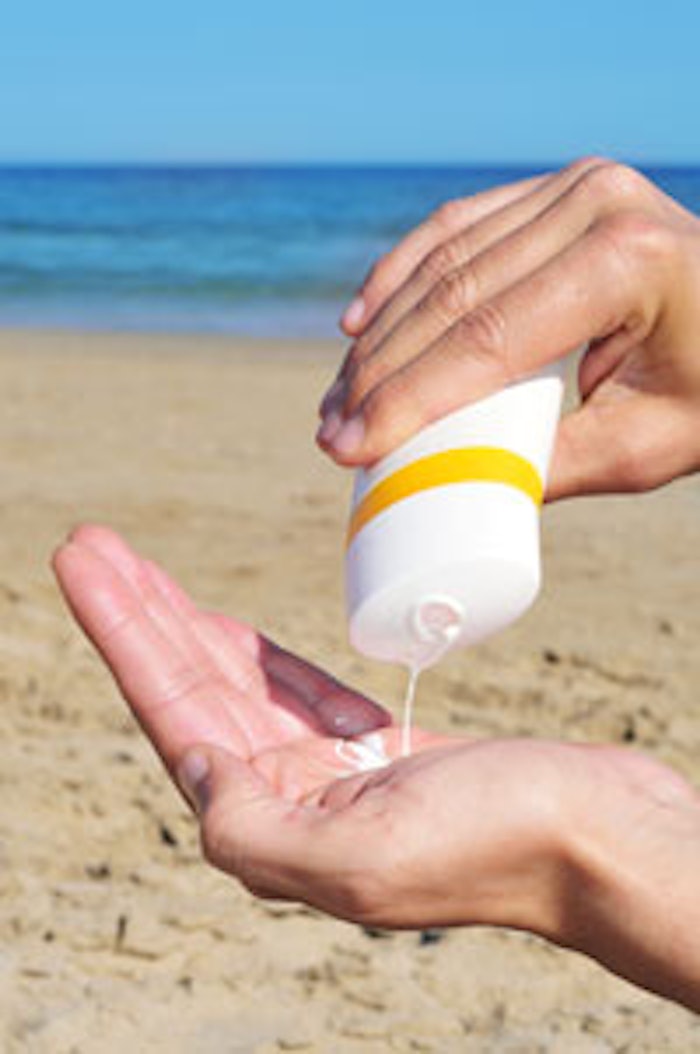
As the sun rises on the summer season for 2014, “Opposing Strategies for Success in the Latin American and Western European Sunscreen Markets,” an analyst insight blog post from Euromonitor International ingredients analyst Anais Mirval, shows the differing sun care strategies of beauty brands and manufacturers for different global markets, as well as how ingredients are affecting continuing development.
Mirval begins, “In 2012, the consumption of sunscreens in Asia Pacific was stronger than in Western Europe. As the Western European sun care market is not showing any signs of recovery, this situation is set to be replicated in Latin America by 2017. Despite similar consumption patterns, sunscreen manufacturers will have to adopt ‘opposing’ strategies if they want to succeed in both markets. In Latin America, efficacy will be key and sunscreens able to provide a high SPF in sun protection will be popular. In Western Europe, sunscreen manufacturers will have to focus on non-core categories while offering a mix of sunscreens and ingredients with additional benefits to sun protection manufacturers, particularly in Southern Europe.”
Mirval shares a graph, “Consumption of Sunscreens by Region,” showing North America’s consumption is still the topline since 1998, although leveling a bit in growth, while Asia-Pacific and Latin America have seen a sharp-ish rise, while Western Europe appears to be distinctly leveling out. Eastern Europe, the Middle East and Africa, and Australasia continue to grow slowly.
Focusing on Latin America, Mirval shares, “In a region where exposure to the sun can be seen as part of the culture, the consumption of sun protection in Latin America is being driven by growing awareness of the dangers posed by the sun to health and the appearance of skin. The main indications of this are a rise in the proportion of UVA sunscreens (butylmethoxy dibenzoylmethane, titanium dioxide and zinc oxide) used in sun care and the increasing popularity of sun protection with high SPFs. This trend will continue to be the most important driver of sunscreen consumption in Latin America as more than 90% of absolute growth over 2012-2017 will come from sun care products, with homosalate, octocrylenes, butylmethoxy dibenzoylmethane, ethylhexyl salicylate and ethylhexyl methoxycinnamate—the most popular sunscreens in the region.”
However, at different tact is necessary for Western Europe, with the consumption beginning to plateau. “In Western Europe, almost 40% of absolute growth in sunscreens over 2012-2017 will come from non-core categories,” Mirval writes. “Indeed, in order to create multifunctionality, manufacturers are using sunscreens in new types of products. And in most cases, the growth of sunscreens is set to be higher in non-core categories than in sun protection. Sunscreen manufacturers will have to focus on selling ethylhexyl methoxycinnamate, titanium dioxide, zinc oxide, butylmethoxy dibenzoylmethane and bis-ethylhexyloxyphenol methoxyphenyl triazine to non-core product manufacturers.”
Innovation is still highly necessary in the sun care market, Mirval also argues. She concludes, “In order to take advantage of the still key sun care category, diversification will be essential. In their hunt for value for money, consumers are looking for extra benefits from their sun protection products. Sun protection which also offers moisturizing, anti-aging, color or even tanning properties will be particularly appreciated, and the best way to attract consumers will be to offer mixes containing sunscreens but also emollients, active skin and natural ingredients and colors.”










